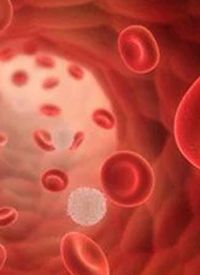News
Article
EMA Accepts Marketing Authorization Application for Momelotinib in Myelofibrosis
Author(s):
The European Medicines Agency has accepted a marketing authorization application for momelotinib as a treatment for patients with myelofibrosis.
Myelofibrosis

The European Medicines Agency (EMA) has accepted a marketing authorization application (MAA) for momelotinib as a treatment for patients with myelofibrosis, according to an announcement from GSK.1
Momelotinib inhibits the JAK1, JAK2, and ACVR1 pathways. Inhibition of the JAK1 and JAK2 pathways could improve symptoms and splenomegaly, and inhibition of ACVR1 can lead to a decrease in circulating hepcidin, which can contribute to anemia since it is elevated in patients with myelofibrosis. Momelotinib is not currently approved in any market.
The MAA is based on data from key phase 3 trials, including the pivotal MOMENTUM trial (NCT04173494). Momelotinib met all primary and key secondary end points from MOMENTUM, including total symptom score (TSS), transfusion independence (TI) rate and splenic response rate (SRR).
In findings presented at the 2022 SOHO Annual Meeting, investigators evaluated the safety and efficacy of the JAK inhibitor in comparison with danazol in patients with myelofibrosis who had baseline platelet counts of ≤150 x 109/L, <100 x 109/L, and <50 x 109/L. Notably, investigators observed responses even in patients with platelet counts as low as 25 x 109/L. At 24 weeks, the overall survival (OS) rate for patients with a platelet count <100 x 109/L was 86.2% with momelotinib and 82.1% with danazol. For patients with a platelet count <50 x 109/L, the 24-week OS rate was 94.4% vs 59.8%, respectively.2
The trial enrolled patients with symptomatic (TSS ≥10) and anemic (hemoglobin <10 g/dL) myelofibrosis who previously received a JAK inhibitor. A total of 195 patients with taper and washout over at least 3 weeks and dosed with a JAK inhibitor therapy were randomly assigned to 200 mg of momelotinib or 600 mg of danazol per day.
Early crossover was permitted to patients on the danazol arm who had confirmed disease progression; those patients then went on to receive an open-label 200 mg daily dose of momelotinib.
The primary end point was TSS response rate (≥50% reduction from baseline; TSS50) at week 24. Key secondary end points included TIR, SRR, and ≥35% splenic volume reduction from baseline (SVR35).
The mean TSS was 27.7 at baseline in the momelotinib groups vs 24.9 in the control groups. Mean prior JAK inhibitor duration was 145.6 weeks (standard deviation [SD], 127.5) and 137.8 weeks (SD, 119.4), respectively.
In the <100 x 109/L group, the mean TSS was 29.4 at baseline in the experimental arm vs 27.2 in the control arm. Mean prior JAK inhibitor duration was 150.7 weeks (SD, 144.6) and 110.6 weeks (SD, 87.8), respectively.
In the <100 x 109/L group, TSS50 (29% vs 15%), TIR (27% vs 21%), and SVR35 (20% vs 6%) all favored the experimental agent. Similarly, outcomes in the <50 x 109/L group, TSS50 (22% vs 8%), TIR (17% vs 15%), and SVR35 (22% vs 0%) also favored momelotinib.
In the <100 x 109/L group, 60.6% of patients in the experimental arm experienced grade 3 or greater treatment-emergent adverse effects (TEAEs) compared with 61.8% in the danazol arm. Twenty-eight patients (42.4%) in the experimental arm experienced serious TEAEs compared with 11 (32.4%) in the control arm.
Twelve patients (18.2%) required momelotinib discontinuation due TEAEs. Twenty-six patients (39.4%) required dose reduction or interruption. Those rates were 14.7% and 26.5%, respectively, in the control arm. The most common grade 3 or higher TEAEs in the experimental group were thrombocytopenia (33.3%) and anemia (9.1%), compared with 20.6% and 11.8%, respectively, in the control group.
In August 2022, the FDA accepted a new drug application for momelotinib for the treatment of patients with myelofibrosis.3
References
- European Medicines Agency accepts marketing authorisation application for momelotinib for the treatment of myelofibrosis. News release. December 2, 2022. Accessed December 2, 2022. https://bit.ly/3Vu8y2D
- Gerds AT, Verstovsek S, Vannucchi A, et al. Thrombocytopenic myelofibrosis (mf) patients previously treated with a jak inhibitor in a phase 3 randomized study of momelotinib (MMB) versus danazol (DAN) [MOMENTUM]. Presented at: the 2022 SOHO Annual Meeting; September 28-October 1, 2022; Houston, TX. Abstract MPN-483.
- US FDA accepts new drug application for GSK’s momelotinib for the treatment of myelofibrosis. News release. GSK. August 17, 2022. Accessed December 2, 2022.https://bit.ly/3K4Azcq









